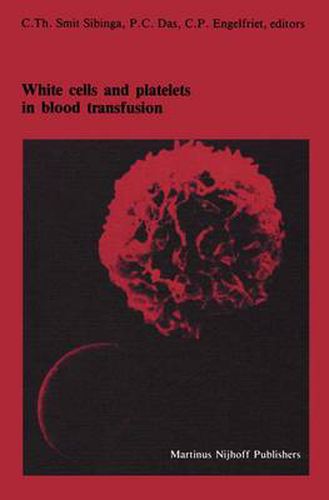Readings Newsletter
Become a Readings Member to make your shopping experience even easier.
Sign in or sign up for free!
You’re not far away from qualifying for FREE standard shipping within Australia
You’ve qualified for FREE standard shipping within Australia
The cart is loading…






This title is printed to order. This book may have been self-published. If so, we cannot guarantee the quality of the content. In the main most books will have gone through the editing process however some may not. We therefore suggest that you be aware of this before ordering this book. If in doubt check either the author or publisher’s details as we are unable to accept any returns unless they are faulty. Please contact us if you have any questions.
As a clinical discipline blood transfusion encompasses enormous vista, vary ing from biotechnology to molecular biology, from plasma products, cell biology and growth factors to interleukines. Growth of knowledge in this field has been rapid, and expertise is now required to be mastered and renewed in translating these ideas for patient care. Various types of cells could be harvested - progenitor stem cells derived from bone marrow or from circulating blood as a source for transplants; in the hemostatic armoury platelets could be used prophylactically; granulocytes and mononuclear cells are available for treatment of infections or immune modulations. However, their therapeutic use carries potential complications including graft versus host disease and CMV-infection. Prevention of such complications by irradiation and by removal of immunocompetent leukocytes are important issues. Thus, production of such therapeutic materials ought to address the issues at the earliest, to eliminate those problems while adhering to the con cept of high quality; the impact of storing platelets for longer periods by using improved plastic containers or storing almost indefinitely in frozen state should be explored. Rapid progress in cell culture techniques and bio technology have enriched the transfusion medicine armoury with lympho kines, interferons and cell colony growth factors which have great potentials for enhancement of basic knowledge as well as considerable therapeutic applications in patients.
$9.00 standard shipping within Australia
FREE standard shipping within Australia for orders over $100.00
Express & International shipping calculated at checkout
This title is printed to order. This book may have been self-published. If so, we cannot guarantee the quality of the content. In the main most books will have gone through the editing process however some may not. We therefore suggest that you be aware of this before ordering this book. If in doubt check either the author or publisher’s details as we are unable to accept any returns unless they are faulty. Please contact us if you have any questions.
As a clinical discipline blood transfusion encompasses enormous vista, vary ing from biotechnology to molecular biology, from plasma products, cell biology and growth factors to interleukines. Growth of knowledge in this field has been rapid, and expertise is now required to be mastered and renewed in translating these ideas for patient care. Various types of cells could be harvested - progenitor stem cells derived from bone marrow or from circulating blood as a source for transplants; in the hemostatic armoury platelets could be used prophylactically; granulocytes and mononuclear cells are available for treatment of infections or immune modulations. However, their therapeutic use carries potential complications including graft versus host disease and CMV-infection. Prevention of such complications by irradiation and by removal of immunocompetent leukocytes are important issues. Thus, production of such therapeutic materials ought to address the issues at the earliest, to eliminate those problems while adhering to the con cept of high quality; the impact of storing platelets for longer periods by using improved plastic containers or storing almost indefinitely in frozen state should be explored. Rapid progress in cell culture techniques and bio technology have enriched the transfusion medicine armoury with lympho kines, interferons and cell colony growth factors which have great potentials for enhancement of basic knowledge as well as considerable therapeutic applications in patients.